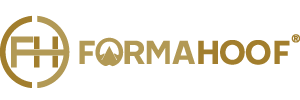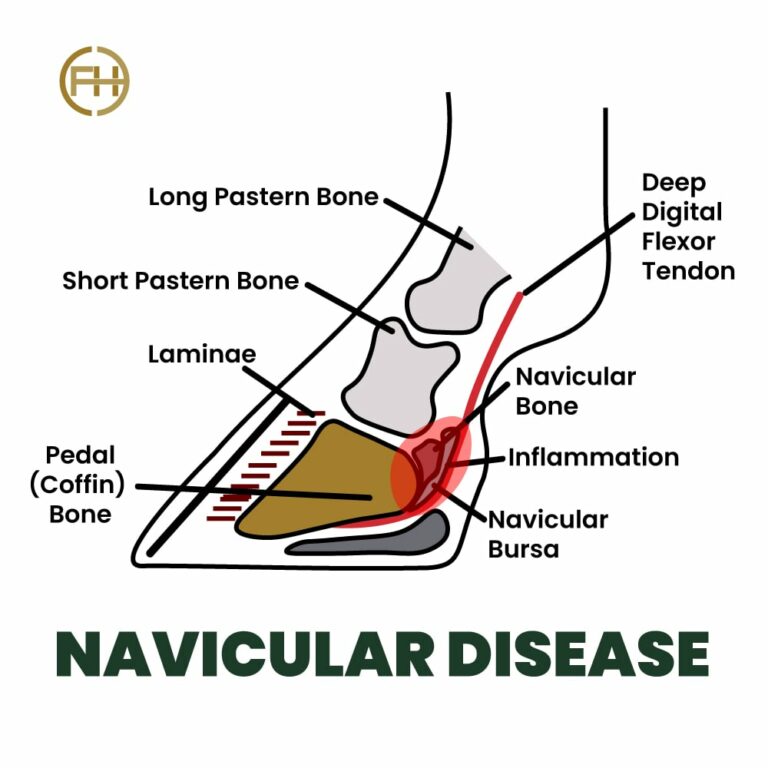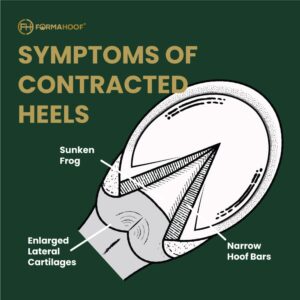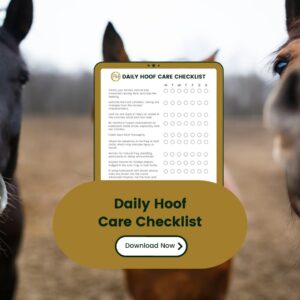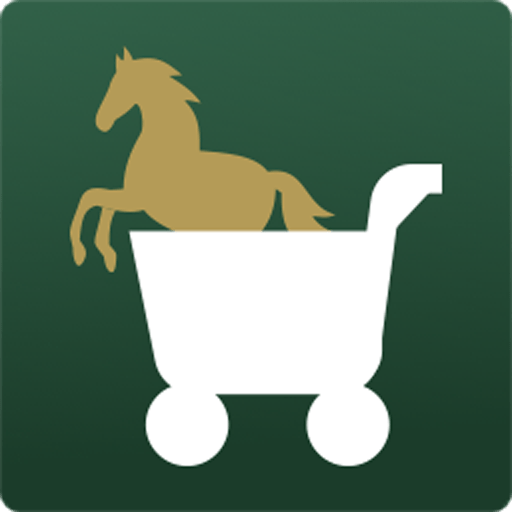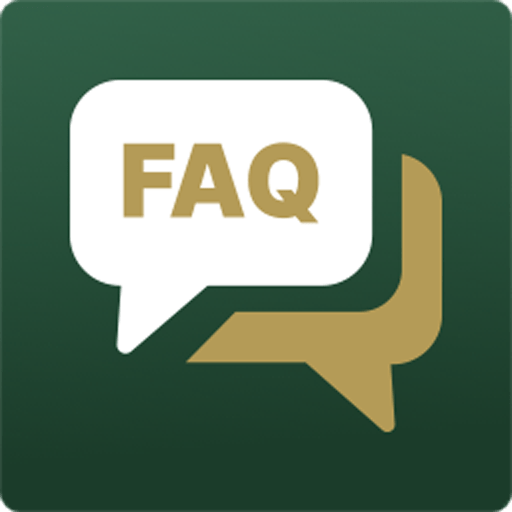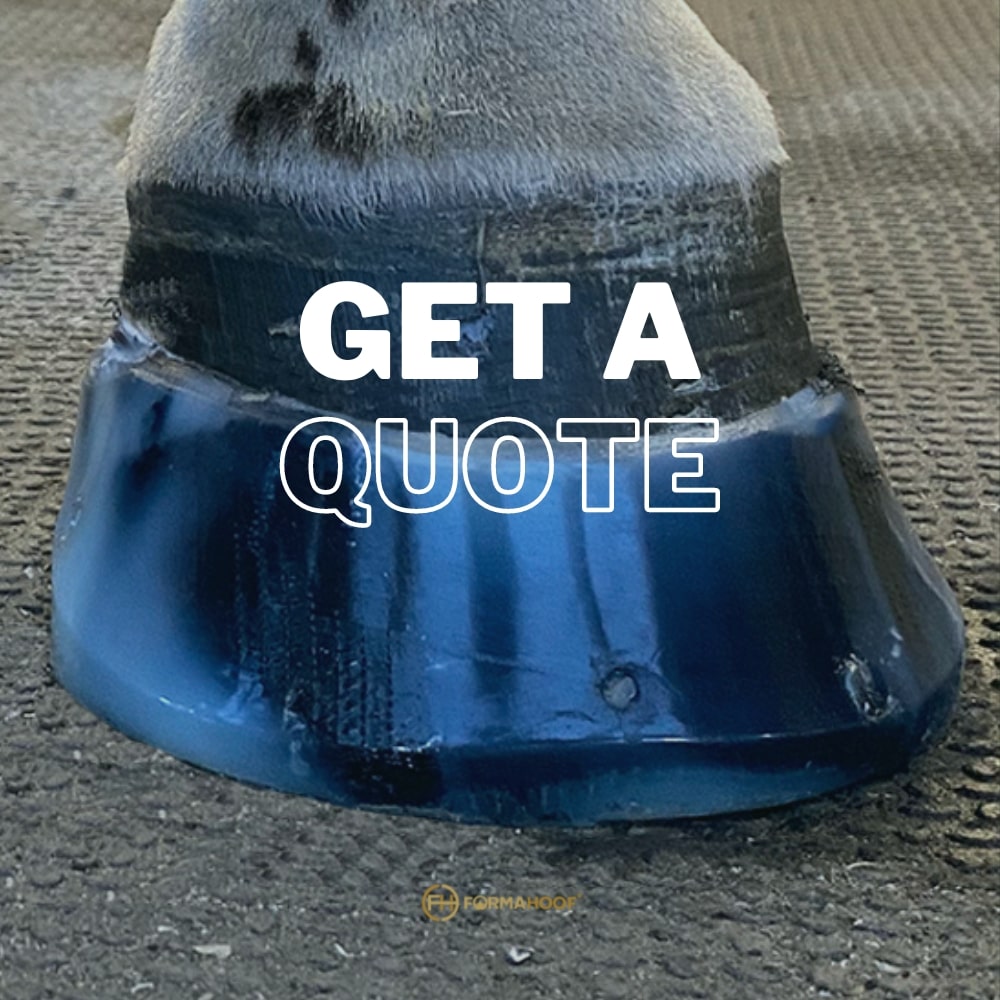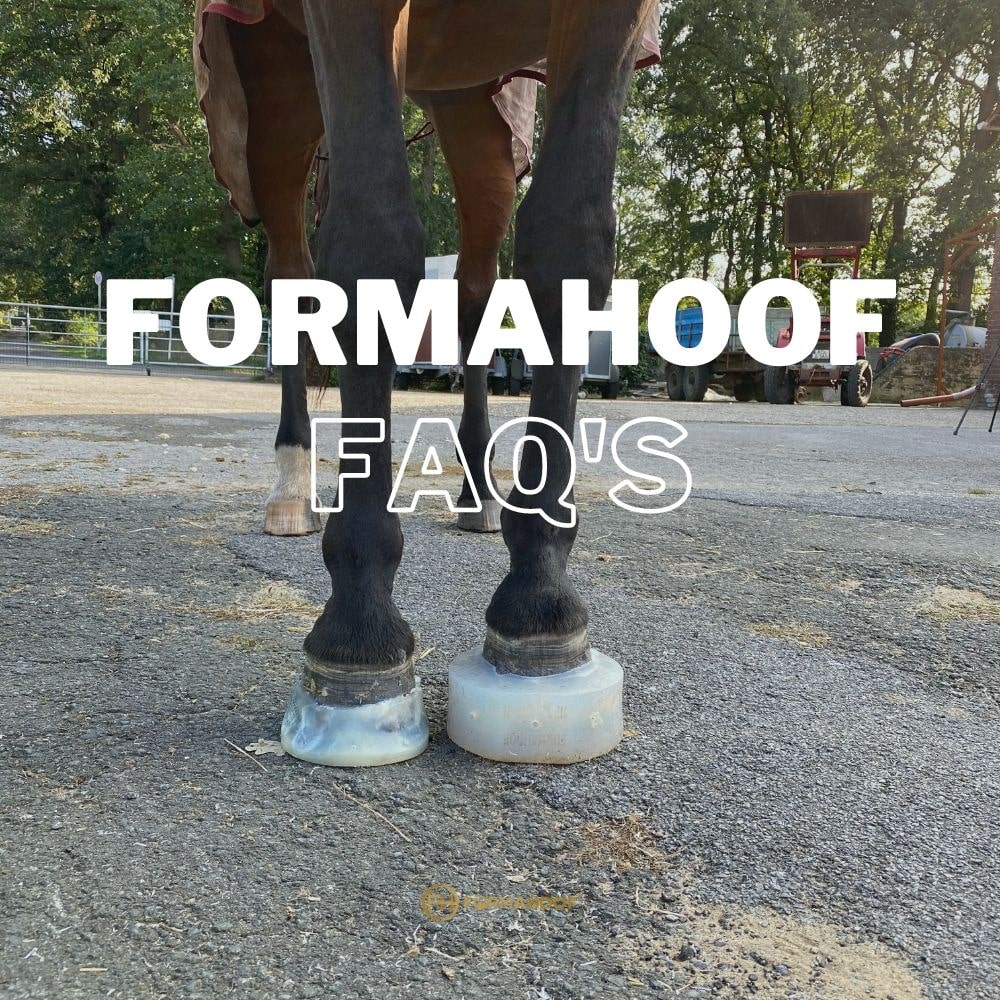Navicular Disease in horses is a complex and often misunderstood condition. It’s more than just a single ailment; it’s a syndrome that encompasses various degenerative changes within the horse’s hoof. It affects structures like the navicular bone, the navicular bursa, the coffin joint, and other soft tissues within the hoof. This means it’s not simply ‘one disease, one cause’.
The result? A common cause of forelimb lameness, potentially altering your horse’s lifestyle, performance, and well-being. The symptoms might start subtly, with your horse refusing to undertake activities they once enjoyed or showing signs of discomfort in their stride.
As horse lovers, it’s our responsibility to understand navicular disease in horses, recognizing the signs early on and knowing the best management practices to ensure our horses lead comfortable and happy lives. Join us as we delve deeper into this topic, offering you a comprehensive understanding of navicular disease, its impacts, and how we can work together for the well-being of our horses.
What Is Navicular Disease in Horses?
Navicular disease, also known as caudal heel syndrome, is a degenerative condition that predominantly affects horses, irrespective of their breed or discipline. This complex ailment is relatively uncommon in ponies and donkeys, underscoring the need for a deeper understanding amongst horse owners.
Historically, navicular disease was considered a degeneration of the navicular bone in the foot. But over the past two decades, our understanding has evolved. We now recognize that the condition extends beyond just the navicular bone, leading to the term ‘navicular syndrome’.
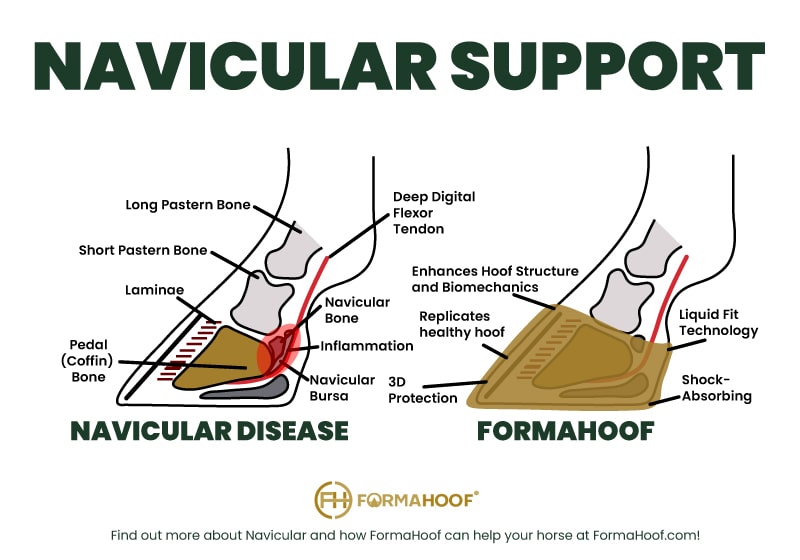
Navicular syndrome is an umbrella term that encompasses the damage or degeneration of various structures within the foot. It’s not limited to the navicular bone but also involves the navicular bursa, the suspensory ligaments of the navicular bone, the impar ligament, the deep digital flexor tendon, the coffin joint, and the collateral ligaments of the coffin joint.
In a horse suffering from navicular disease, any combination of these structures can be impacted. Though it can be restricted to one limb, it most commonly affects both front hooves, leading to bilateral lameness. Cases involving the rear feet have been reported, but they are exceedingly rare.
The complexity of navicular disease, coupled with its varied presentations and potential causes, makes early diagnosis and effective management challenging. This is where thermography comes into play. As a non-invasive technique capable of detecting minute changes in temperature, thermography allows for the early detection of inflammation and circulatory changes associated with navicular disease.
Detecting Navicular Disease
Detecting Navicular Disease in horses is often compared to solving a complex puzzle; the pieces are scattered, and we must connect them to reveal the complete picture. A keen eye, experience, and an understanding of your horse’s behaviours are your most important tools. Let’s explore the crucial signs to be aware of:
The Walk
Have you noticed your horse developing a short, choppy stride? Are they often stumbling, even at a walk or when asked to step over minor obstacles like ground poles? If yes, it might be time to consider Navicular Disease as a potential cause. These horses tend to land on their toes first, avoiding the pressure on their inflamed heel area.
The Stance
While standing, horses suffering from Navicular Disease frequently shift their weight. They do this to alleviate pressure and pain on the heel area. If your horse is constantly shifting their weight, it might be a subtle cry for help.
The Symptoms
Navicular Disease is a bilateral condition, usually affecting both front feet, although one foot can sometimes be worse than the other. This can cause your horse to show lameness on one front leg initially. As with any condition, the signs may vary in intensity from horse to horse. Some may display low-grade, intermittent lameness that only becomes noticeable after hard work or when working on uneven ground.
The Diagnosis
A definitive diagnosis of Navicular Disease involves a careful examination of your horse’s history, genetics, and movement and more. You can look for the classic signs, such as head-bobbing, especially at the trot, and a toe-first landing. But remember, these signs may only be clues leading to a definitive diagnosis of Navicular Disease and should always be evaluated by a qualified professional. Advanced diagnostic tools like thermography, radiographs and MRIs play a pivotal role.
Living and Thriving with Navicular
Is navicular a life sentence? Not at all. While there’s no outright cure for the condition, it’s about implementing effective management strategies that prioritize the horse’s comfort. One progressive approach is the FormaHoof hoof care system, which instantly realigns the horse’s hoof angles and rebuilds the heels. This non-invasive solution restores the foot’s correct biomechanics, promoting drug-free management of the condition, and most importantly, enhancing the horse’s comfort.
Remember, the journey with Navicular Disease is a marathon, not a sprint. Patience, consistency, and a team-based approach involving veterinarians, farriers, and caregivers, are the keys to effectively managing this condition.
Riding a horse with navicular depends entirely on the disease severity and should be approved by your professional hoof care provider. It’s crucial to discuss treatment plans and rehabilitation procedures in detail with everyone involved in your horse’s care to ensure the best quality of life for your horse.
Embracing Innovation for Navicular Management
Traditional methods like specific shoeing techniques and medication can help manage navicular disease. However, the FormaHoof system is a game-changer, offering immediate comfort and elevation for the affected horse. By facilitating correct weight distribution and promoting increased blood flow, the FormaHoof supports healthy natural hoof growth and healing within the podotrochlear apparatus.
FormaHoof’s approach considers the three critical elements of hoof care for navicular disease – supporting a correct balanced hoof structure, providing 3D heel lift to align the hoof pastern axis, and supporting the digital cushion and lateral cartilages. As a result, the recovery timeline for horses with navicular disease can be significantly reduced.
To delve deeper into understanding and managing navicular disease, we invite you to join our free, expert-led lecture. It’s a comprehensive thermographic case study conducted over two years, offering invaluable insights into this condition. Enrol now and broaden your understanding of navicular disease with FormaHoof!
Navigating Navicular: A Path Forward
Navigating the complexities of navicular disease can feel daunting for anyone. However, as we’ve discussed, a well-informed, proactive, and innovative approach can make a significant difference in managing this condition. By recognizing the signs early, leveraging advanced diagnostic tools like thermography, and incorporating a revolutionary hoof care system: FormaHoof, we can ensure our equine companions lead comfortable, active lives.
In spite of its challenges, navicular disease doesn’t mark the end of your horse’s journey—it’s just a different path. With the right care, understanding, and management, many horses with navicular disease continue to lead fulfilling lives, participating in various activities and disciplines. It’s about adjusting to a new normal, with the welfare and comfort of your horse always being the prime concern.
We hope this serves as a valuable resource for understanding and managing navicular disease in horses. With knowledge, patience, and the right tools, we can help our horses overcome this hurdle. After all, in the heart of every challenge lies opportunity—opportunity to learn, to innovate, and to improve.
Remember, the key lies in not facing these challenges alone. A collaborative approach is crucial, you can always feel free to get in touch for advice. In the same spirit, we invite you to join our expert-led lecture to delve deeper into this topic and be part of a community that believes in a better future for our horses. Together, we can turn the tide against navicular disease.
🌟 You’re Invited to Step Forward into a Future where Challenges are Met with Innovation and Compassion. 🌟
Let’s Navigate, Innovate, and Celebrate a Future of Enhanced Equine Wellness Together!
👉 Learn more about FormaHoof’s Benefits Today! 👈
